 “Unlike the MakerBot and RepRap printers that build objects by melting plastic, or the Form 1 that uses a laser to cure resin, Pwdr works just like a desktop printer,” explains Wired. “An HP inkjet deposits a liquid binder, mixed with ink, onto a layer of white gypsum powder. After the printhead passes, a roller bar drags a thin layer of powder across the surface and the process repeats a couple hundred, or thousand, times.”
“Unlike the MakerBot and RepRap printers that build objects by melting plastic, or the Form 1 that uses a laser to cure resin, Pwdr works just like a desktop printer,” explains Wired. “An HP inkjet deposits a liquid binder, mixed with ink, onto a layer of white gypsum powder. After the printhead passes, a roller bar drags a thin layer of powder across the surface and the process repeats a couple hundred, or thousand, times.”
“When completed,” the article continues, “the printer looks like a fish tank full of baby powder and the model needs to be carefully removed, dusted off, and dipped in clear glue that infiltrates the part and solidifies it. This process is essentially the same as what ZCorp 3D printers offer and opens the potential for hobbyists to create models featuring thousands of colors using a CMYK process, not the two or three offered by newer home user systems.”
See the full story here: http://www.wired.com/design/2013/01/pwdr-3d-printer-open-source/
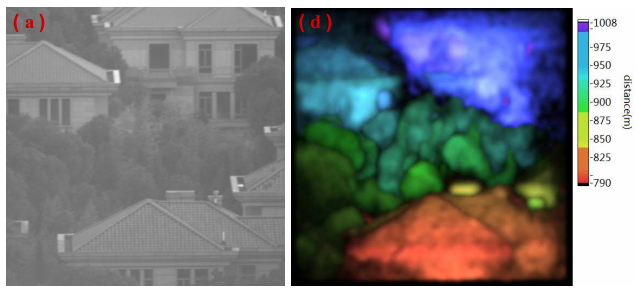 [Philip Lelyveld comment: I'm having trouble understanding how the recording element is a "pixel" as opposed to a volume.]
[Philip Lelyveld comment: I'm having trouble understanding how the recording element is a "pixel" as opposed to a volume.]
Ghost imaging is the extraordinary technique of bouncing a laser beam off an object and making high quality images from the reflected light using a single pixel. This single pixel records many data points which must be stitched together to create the image.
But there is no scanning involved (which would be equivalent to taking an ordinary picture very slowly).
Instead, the data from the single pixel is compared against the intensity of the original laser beam, which must be randomised by passing it through frosted glass. Then any correlations between the original and reflected beam reveal information about the object in the image.
It is these correlations that physicists use to assemble the picture, known as a ghost image.
That may sound rather fiddly and time consuming but it is actually hugely efficient.
See the full story here: http://www.technologyreview.com/view/510411/first-3d-images-created-with-single-pixel-sensor/
[Philip Lelyveld comment: this article contains good brief update descriptions of the different display options available to consumers.]
IT ISN'T YOUR IMAGINATION—television has become bewildering. We're not talking about the dizzying number of channels. We mean the televisions themselves: the technology that drives them and the features that differentiate one expanse of sprawling glass from the next. There are more acronyms than ever to decipher. LCD begot LED, which, in turn, spawned OLED. And just when "high-definition" seemed to be reaching the physical limit of resolution, along comes Ultra HD, a new standard so confusing that even the industry can't agree on what to call it (is it 4K, Ultra HD or 4K Ultra HD?). But these are exciting times, too. Images are sharper and bigger than ever before—and great displays are more affordable. If you're in the market for a new TV, there are a few key terms worth learning, whether you're looking to screen effects-laden blockbusters or just want to tune in to "Downton Abbey." From panels that are barely out of the prototype stage to the industry's steadfast push for 3-D, here's what you need to know to navigate the state-of-the-art in displays.
Read the full story here: http://online.wsj.com/article/SB10001424127887323468604578249643077519374.html
At a 3,000 square feet factory in Kwai Hing--home of Hong Kong's production industry in the 90s before it drifted north to China--American expat Jon Buford has begun manufacturing and distributing what is touted as the world's cheapest 3D printer, the Makibox.
Buford hopes the US$200 device can help push this technology to the masses.
See the full story here: http://www.zdnet.com/3d-printing-heads-toward-mainstream-7000010176/
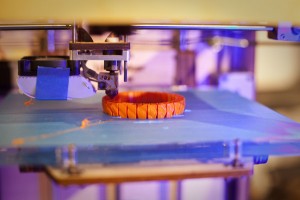 The Bedford, Massachusetts, firm has filed a US patent on a way to rid 3D printers of the need for pesky humans, allowing robots to do all the post-printing work to make a complete product.
The Bedford, Massachusetts, firm has filed a US patent on a way to rid 3D printers of the need for pesky humans, allowing robots to do all the post-printing work to make a complete product.
Enter iRobot's do-it-all robotic fabricator, comprising a twin-armed robot allied with a 3D printer, a milling machine and a drill, all on one platform. The platform is peppered with sensors so that a computer can choreograph all stages of manufacture, using the additive technique of 3D printing or the subtractive ones of milling and drilling, as needed. Both robot arms have dextrous grippers with six degrees of freedom, so one can hold a newly 3D-printed piece while the other secures another piece to it with glue, connectors or fasteners.
See the full story here: http://www.newscientist.com/blogs/onepercent/2013/01/irobots-3d-printer-patent.html
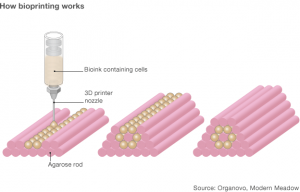 No matter what restaurant week specials they put out in your local town, none will compare to the stale taste of the $300,000 3D-printed hamburger Modern Meadow offers. The father-son startup company has figured out a way to combine the process of bioprinting with edible food so they can create a hamburger patty – albiet at an astronomically expensive price.
No matter what restaurant week specials they put out in your local town, none will compare to the stale taste of the $300,000 3D-printed hamburger Modern Meadow offers. The father-son startup company has figured out a way to combine the process of bioprinting with edible food so they can create a hamburger patty – albiet at an astronomically expensive price.
Of course, the resulting meat, such as patties and pork chops, created by the bioprinter will still need to be cooked on a frying pan to taste.
Read the full story here: http://www.digitaltrends.com/lifestyle/300k-3d-printed-burger/
The Internet is having a mid-life crisis: Having just turned 40, it’s starting to go 3D. The transition is still in its early stages, but champions of the cause say it’s both natural and inevitable, with mass adoption expected within a few years. 3D will make the Web more social, they say, and it will introduce powerful new ways for people in education, business and medicine to interact with content and with each other.
What is the 3D Internet? Think of it as a set of interconnected virtual worlds that users can visit to consume services, “teleporting” from one world to another. It uses many of the same basic technology components as the 2D Internet—a browser, search engine and servers, for example. But what sets it apart is the use of 3D computer graphics and, in many cases, avatars—which Pirkola says will make it more social than the 2D Web.
“The 2-D graphical user interface has reached its potential and it’s time to move on and conquer the 3-D world,” says Ala-Mursula.
Will the 3D Internet replace the 2D Internet? Pirkola says not, and predicts people will use 2D and 3D apps side by side based on need.
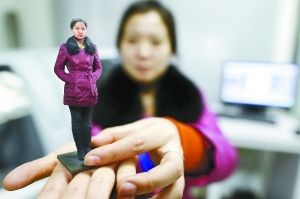 China's first 3D printing museum was opened at the Beijing DRC Industrial Design andCreative Industry Base on Jan. 15th, 2013, giving visitors a chance to experience thisamazing 3D technology, according to Beijing Evening News.
China's first 3D printing museum was opened at the Beijing DRC Industrial Design andCreative Industry Base on Jan. 15th, 2013, giving visitors a chance to experience thisamazing 3D technology, according to Beijing Evening News.
In a bid to gain some full-on experience, visitors can have their entire body scanned bya shoebox-sized 3D scanner. The multi-dimensional data will then be stored andprocessed by computer. Several hours later, they will receive a 3D life-like minisculpture of themselves.
Apart from human figurines, the museum can also print out other items, including cans,rings, vases, shoes, dolls and iPhone holders.
See the full story here: http://english.peopledaily.com.cn/90782/8098818.html
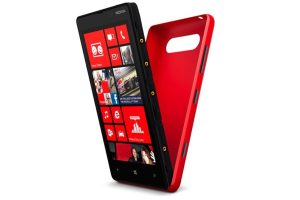 “Our Lumia 820 has a removable shell that users can replace with Nokia-made shells in different colors, special ruggedized shells with extra shock and dust protection, and shells that add wireless charging capabilities found in the high-end Lumia 920 to the mid-range 820.
“Our Lumia 820 has a removable shell that users can replace with Nokia-made shells in different colors, special ruggedized shells with extra shock and dust protection, and shells that add wireless charging capabilities found in the high-end Lumia 920 to the mid-range 820.
“Those are fantastic cases, and a great option for the vast majority of Nokia’s Lumia 820 customers. But in addition to that, we are going to release 3D templates, case specs, recommended materials and best practices — everything someone versed in 3D printing needs to print their own custom Lumia 820 case.”
See the full story here: http://gigaom.com/2013/01/18/why-nokias-3d-printing-move-embraces-the-future/
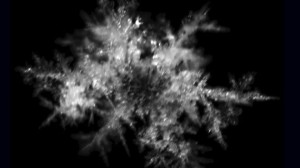 Researchers at the University of Utah have developed the Multi Angle Snowflake Camera (MASC), which uses three high-speed cameras triggered by infrared sensors to shoot flakes as they float to the ground, with exposures as quick as 1/25,000 of a second. The device also measures the flakes' fall speed, all without touching them, which would disturb the measurements.
Researchers at the University of Utah have developed the Multi Angle Snowflake Camera (MASC), which uses three high-speed cameras triggered by infrared sensors to shoot flakes as they float to the ground, with exposures as quick as 1/25,000 of a second. The device also measures the flakes' fall speed, all without touching them, which would disturb the measurements.
MASC can photograph and measure tens of thousands of snowflakes in a single night, Garrett said. Already, two MASC cameras in use at the Alta Ski Area are generating results that suggests wind and snow interact differently than weather models predict.
Read the full story here: http://www.foxnews.com/tech/2013/01/18/cameras-capture-falling-snowflakes-in-3d/
 The Bedford, Massachusetts, firm has filed a US patent on a way to rid 3D printers of the need for pesky humans, allowing robots to do all the post-printing work to make a complete product.
The Bedford, Massachusetts, firm has filed a US patent on a way to rid 3D printers of the need for pesky humans, allowing robots to do all the post-printing work to make a complete product. China's first 3D printing museum was opened at the Beijing DRC Industrial Design andCreative Industry Base on Jan. 15th, 2013, giving visitors a chance to experience thisamazing 3D technology, according to Beijing Evening News.
China's first 3D printing museum was opened at the Beijing DRC Industrial Design andCreative Industry Base on Jan. 15th, 2013, giving visitors a chance to experience thisamazing 3D technology, according to Beijing Evening News. “Our Lumia 820 has a removable shell that users can replace with Nokia-made shells in different colors, special ruggedized shells with extra shock and dust protection, and shells that add wireless charging capabilities found in the high-end Lumia 920 to the mid-range 820.
“Our Lumia 820 has a removable shell that users can replace with Nokia-made shells in different colors, special ruggedized shells with extra shock and dust protection, and shells that add wireless charging capabilities found in the high-end Lumia 920 to the mid-range 820. Researchers at the University of Utah have developed the Multi Angle Snowflake Camera (MASC), which uses three high-speed cameras triggered by infrared sensors to shoot flakes as they float to the ground, with exposures as quick as 1/25,000 of a second. The device also measures the flakes' fall speed, all without touching them, which would disturb the measurements.
Researchers at the University of Utah have developed the Multi Angle Snowflake Camera (MASC), which uses three high-speed cameras triggered by infrared sensors to shoot flakes as they float to the ground, with exposures as quick as 1/25,000 of a second. The device also measures the flakes' fall speed, all without touching them, which would disturb the measurements.

